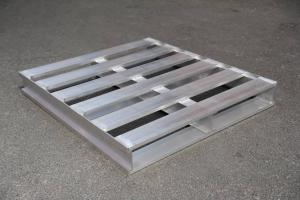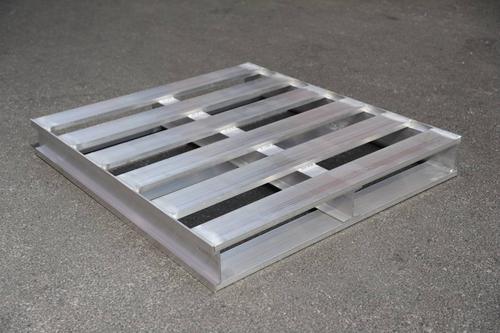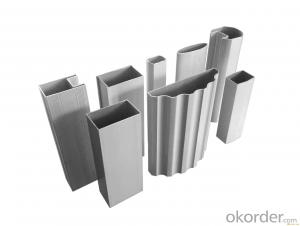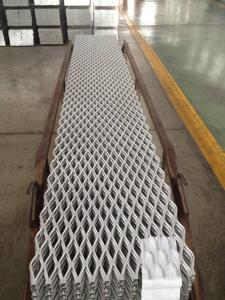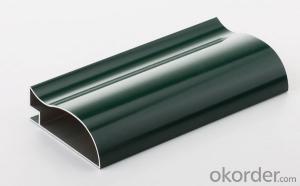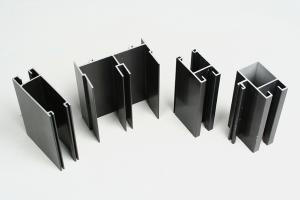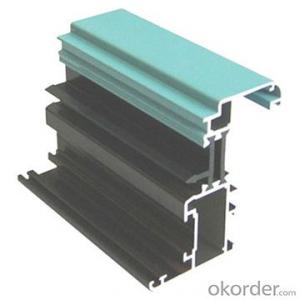Channel Aluminum Extrusion Profiles Hot Sale Aluminum Pallet for Warehouse Use
- Loading Port:
- China Main Port
- Payment Terms:
- TT OR LC
- Min Order Qty:
- -
- Supply Capability:
- -
OKorder Service Pledge
OKorder Financial Service
You Might Also Like
Hot Sale Aluminium Pallet Used For Warehouse
Specifications
Alloy: 5xxx and 6xxx
The weight is light
It is very clean
High load capacity
High quality: anticorrosion, rust protection and easy clean surface
Compatible for all pallet systems: wood, metal, plastic and slip sheet
Sizes: 36 x 36, 36ft x 42, 36 x 48, 42ft x 36, 42ft x 42, 42 x 48 and 48 x 48-inch and customized size is acceptable
Standard package: suitable for long ocean transporting
OEM&ODM is welcome
Last for life time
Packaging & Delivery
Packaging Detail: Carton, we also can pack as per customers' requirement
Delivery Detail: 25-30 days since we receive your advance payment
- Q: This question asks for a list of various types of aluminum profiles that are commonly used in the construction industry.
- <p>Aluminum profiles used in construction come in various types, each with specific applications. Common types include: 1. Extruded Profiles: These are the most common, formed by forcing aluminum through a die to create different shapes and sizes. 2. Structural Profiles: Used for structural integrity, such as beams and columns. 3. Decorative Profiles: For aesthetic purposes, like trims and moldings. 4. Industrial Profiles: Designed for specific industrial applications, like conveyor systems. 5. Window and Door Profiles: Specifically designed for window and door frames. 6. Heat Sink Profiles: Used for dissipating heat in electronic devices. 7. Railing Profiles: For constructing railings and balustrades. 8. Solar Profiles: Used in solar panel mounting systems. Each type has unique properties and is chosen based on the specific requirements of the construction project.</p>
- Q: Are aluminum profiles recyclable and can they be used again in flooring applications?
- <p>Yes, aluminum profiles can be recycled and reused in flooring applications. Aluminum is a highly recyclable material, with recycling processes that retain its properties without loss in quality. This makes it an environmentally friendly choice for flooring as it reduces waste and conserves resources. Recycled aluminum can be used to create new profiles for flooring systems, maintaining strength and durability while offering a sustainable solution.</p>
- Q: Can aluminum profiles be used in modular wall systems?
- Yes, aluminum profiles can be used in modular wall systems. Aluminum profiles are lightweight, durable, and versatile, making them an ideal choice for constructing modular walls. They can be easily assembled, disassembled, and reconfigured to meet specific design requirements. Additionally, aluminum profiles offer excellent structural integrity and can accommodate various finishes, such as glass panels or cladding, enhancing the aesthetics of the modular wall system.
- Q: Fenglv aluminum material how ah? What aluminum materials do you use for windows and doors?
- Domestic aluminum quality is about the same, mainly you installed in the window accessories, is the key to the life of the service, recommend several brands Bar Reid Jan Ron Lixin spring is not recommended, quality is not very rely on live
- Q: Can aluminum profiles be used for agricultural or farming applications?
- Yes, aluminum profiles can be used for agricultural or farming applications. Aluminum is lightweight, durable, and corrosion-resistant, making it suitable for various agricultural equipment and structures such as greenhouse frames, irrigation systems, storage sheds, and livestock enclosures. Additionally, aluminum profiles can be easily fabricated and customized to meet specific farming needs, making them a versatile choice for agricultural applications.
- Q: What are the bending capabilities of aluminum profiles?
- Due to their inherent properties, aluminum profiles possess exceptional bending capabilities. Aluminum, being a highly malleable metal, can effortlessly assume various shapes without fracturing or breaking, making it an ideal choice for applications that necessitate complex bending or curving. The bending capabilities of aluminum profiles are predominantly influenced by the alloy employed and the specific shape or design being bent. Certain aluminum alloys, such as 6061 or 6063, are commonly utilized for extruded profiles due to their excellent bending properties. These alloys strike a good balance between strength and formability, making them well-suited for bending applications. To bend aluminum profiles, specialized machinery, like a bending machine or a press brake, is typically employed. The profile is meticulously positioned and clamped before pressure is applied to achieve the desired shape. The process can involve multiple passes to accomplish tight or gradual bends. Aluminum profiles can be bent to various angles, ranging from sharp bends to gentle curves, contingent upon the requirements of the application. The bending radius, denoting the minimum radius at which the profile can be bent without causing deformation, is dependent on the profile's thickness, alloy, and temper. Thinner profiles generally possess smaller bending radii compared to thicker ones. It is crucial to note that excessive bending or surpassing the material's capabilities can result in cracking or permanent deformation. Consequently, it is imperative to consider the specific bending requirements and seek guidance from experts or manufacturers to ensure adherence to proper bending techniques and limitations. In conclusion, aluminum profiles exhibit exceptional bending capabilities, facilitating the creation of intricate and customized shapes. Their versatility and formability have made them a favored option in industries such as construction, automotive, aerospace, and furniture manufacturing.
- Q: What are the different cross-sectional shapes available for aluminum profiles?
- There are several different cross-sectional shapes available for aluminum profiles, including square, rectangular, round, T-shaped, and I-shaped.
- Q: Regarding the wall thickness of aluminum alloy profiles, are there any standards in the country?
- < technical specification for glass curtain wall JGJ102-2003> open section bar is not less than 3.0mm. For example, the beams are mostly open and closed at one end with a cover plate. Closed profiles such as stand up, mostly closed type, not less than 2.5mm, these are only the minimum requirements for wall thickness, but also in accordance with the calculation of the book in the calculation of the wall thickness.
- Q: This question asks whether aluminum profiles can be utilized for constructing exterior walls and seeks reasons for their potential use.
- <p>Yes, aluminum profiles can be used for exterior walls. They are chosen for their durability, corrosion resistance, and low maintenance requirements. Aluminum is lightweight, which makes it easier to handle and install. It also has excellent thermal performance, allowing for energy-efficient construction. Additionally, aluminum profiles can be powder coated or anodized, offering a wide range of colors and finishes, enhancing the aesthetic appeal of the building. Their strength and flexibility make them suitable for various architectural designs and structural applications.</p>
- Q: What are the advantages and disadvantages of the use of magnesium profiles compared with aluminum profiles?
- 3 oxidation of metals: the periodic table clearly shows that magnesium alloy is more easily oxidized than aluminum alloy.4 manufacturing cost Description: because magnesium alloy is a lively metal, so manufacturing equipment and environment have higher requirements, leading to high manufacturing costs, production of bicycle frame cost performance is far less than aluminum alloy frame.
Send your message to us
Channel Aluminum Extrusion Profiles Hot Sale Aluminum Pallet for Warehouse Use
- Loading Port:
- China Main Port
- Payment Terms:
- TT OR LC
- Min Order Qty:
- -
- Supply Capability:
- -
OKorder Service Pledge
OKorder Financial Service
Similar products
Hot products
Hot Searches
Related keywords
